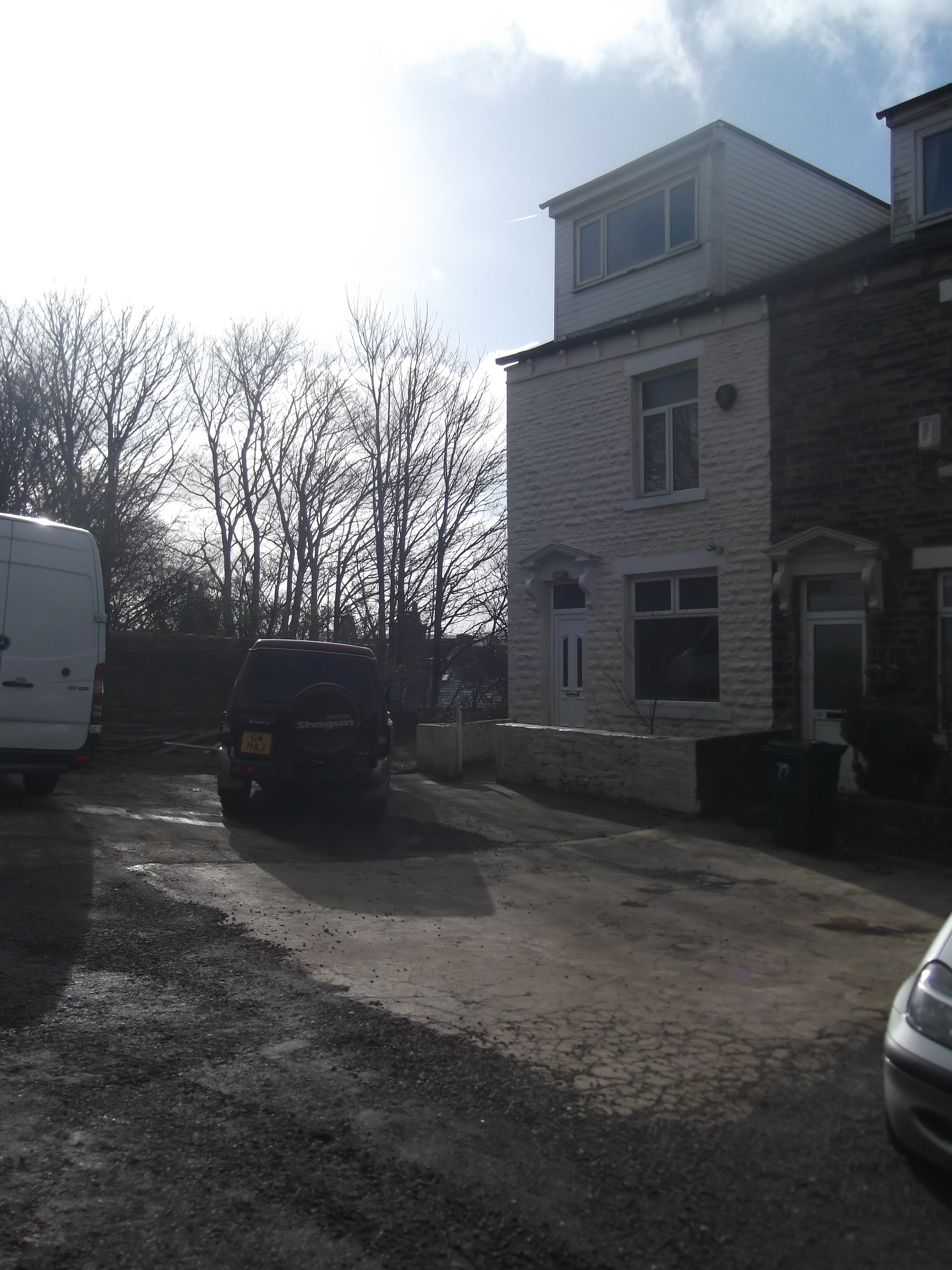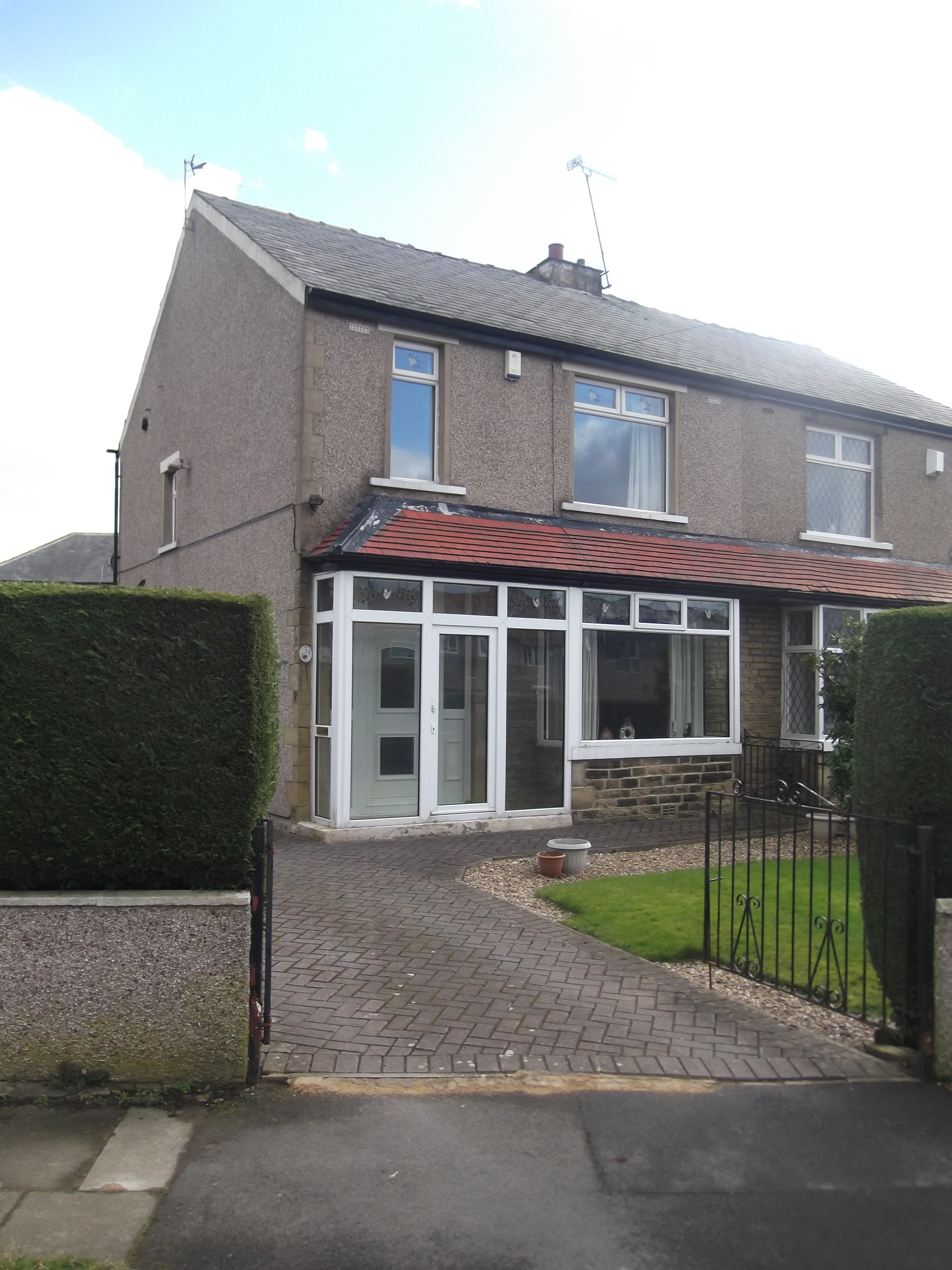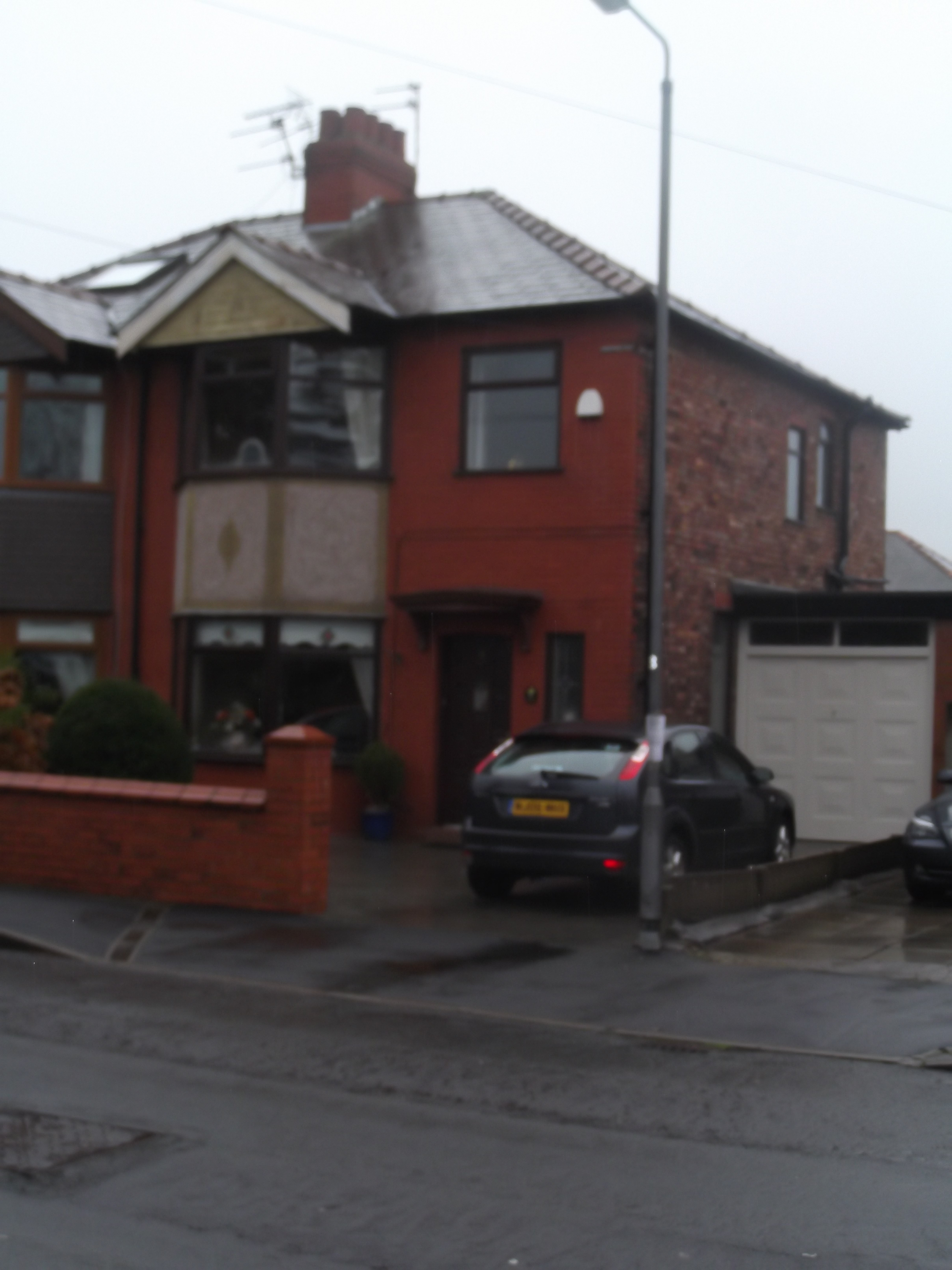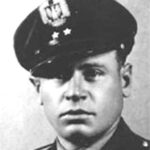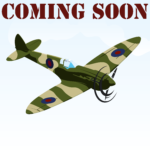Name:
Date Of Birth:
Place of Birth:
Date Of Death:
Place of Death:
Born and educated in Yorkshire, Norman Sutton’s life took him to Merseyside in the mid 1930s. Like his father, Norman worked for St Helens glass manufacturer Pilkington Bros. Ltd and with war looming joined the RAF.
Keenly aware of the ongoing international situation in the late 1930s, Norman Sutton was one of the first men from St Helens to enlist with the Auxillary Air Force, doing so before the outbreak of war. He trained with No 611 (West Lancashire) Squadron at RAF Speke with whom he flew some operational patrols in 1940.
By August 1940 Norman was married, had completed his training and was a commissioned Pilot Officer with No. 611 (West Lancashire) Squadron at RAF Digby. He was soon flying patrols above Lincolnshire and beyond.
As the Battle of Britain raged in the skies above southern England and pilot losses grew, Norman was posted to Biggin Hill with No. 72 (Basutoland) Squadron. In a letter home he referred to it as ‘the Valley of Death’. Despite being at the epicentre of the Battle he was to die without ever engaging enemy aircraft.
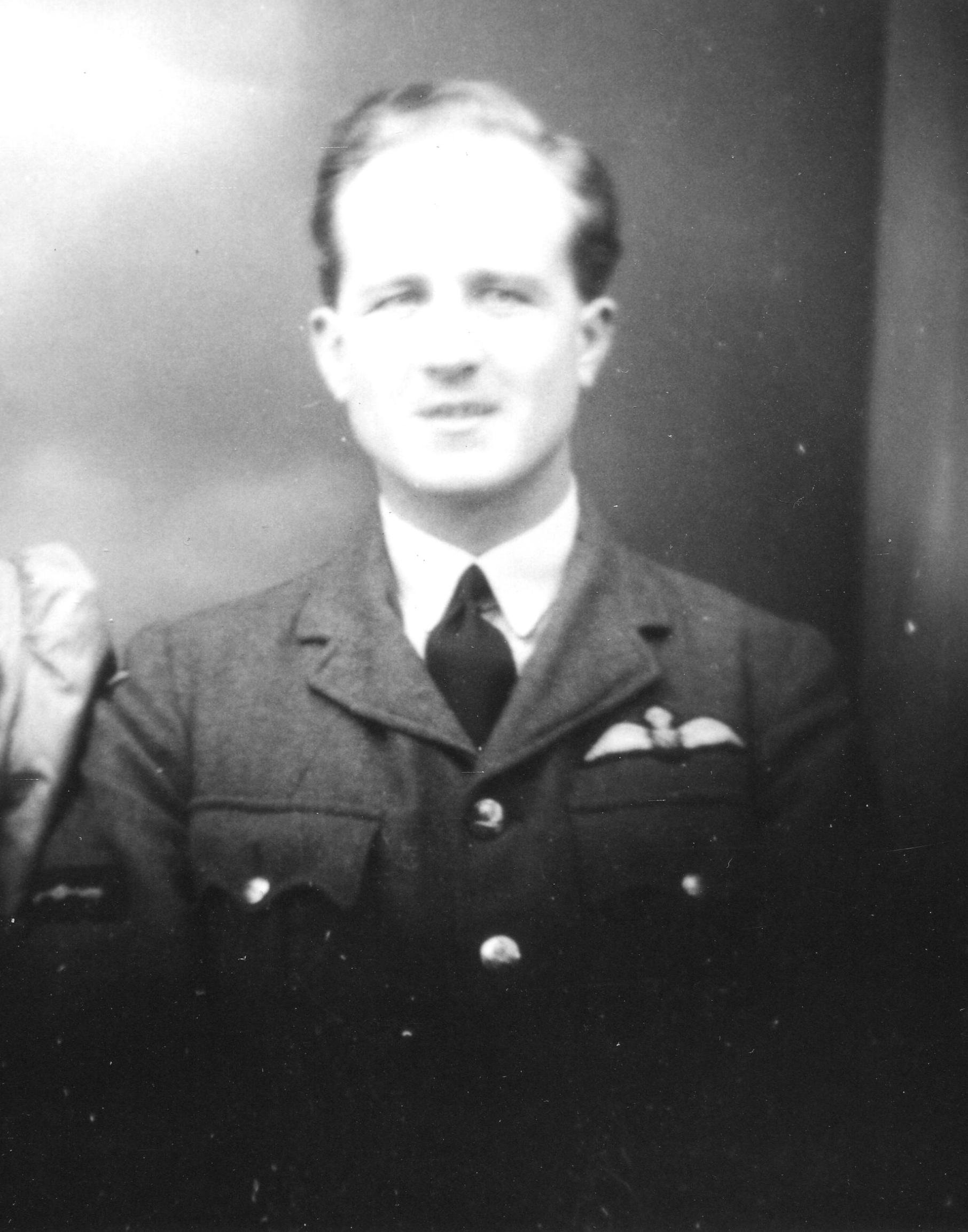
Norman Sutton’s life straddled the Pennine hills, being born in Yorkshire and laid to rest in Lancashire. His family was used to going where the work was, having moved to St Helens from Staffordshire shortly after his father, Oliver, was born. Oliver left school to work as a clerk at glass manufacturers Pilkington Bros. Ltd and married Dora Smith Hartley at Prescot in the spring of 1907. They settled in Saddlers Lane, Eccleston and soon became parents of a son, Gerald Hartley Sutton.
Moving to Yorkshire
In 1913 Dora was expecting Norman, but shortly before his birth the family was asked by Pilkington Bros. Ltd to transfer to their Bradford works. Arrangements went well and the family moved into an end of terrace house at 76 Airedale College Road (now demolished) where Norman Sutton was born on 19 July 1914, just nine days before the outbreak of the First World War. His father, Oliver, was to play his part in the conflict.
Oliver Sutton’s War
Oliver enlisted with the Royal Navy Air Service (RNAS), the naval wing of the Royal Flying Corps (RFC), on 10 August 1917 joining HMS President II at Crystal Palace. Despite the name he did not join a ship. HMS President II was, in fact, a shore establishment, otherwise known as a “stone ship” that acted as London headquarters for Admiralty based personnel. Oliver was only there for a day before moving to the Royal Navy’s Central Depot and Training Establishment at Cranwell for training as an Aircraftsman II. His service number was F35389.
His record lists him, as serving on HMS Daedalus. Once again this isn’t a ship, rather it’s the name given to the Royal Navy’s Central Depot and Training Establishment at Cranwell and most likely arose because the officers and ratings of the Central Training Establishment were borne on the books of HMS Daedalus which was a hulk in the Medway and the nominal depot ship for all RNAS personnel serving on other stations
The RNAS was primarily the service that advanced the British bombing capability. As the war progressed the aircraft that delivered those bombs grew large and more deadly and so required expert maintenance. For instance, the problem of firing through a spinning propeller was solved by a synchronising gear that was first employed on the Sopwith 1 ½ Strutter. The fliers became fighter pilots and Oliver was one of the men who maintained their aircraft. He impressed enough and was promoted to Aircraftsman I on 10 February 1918.
On 1 April 1918 the RNAS and the RFC amalgamated to form the Royal Air Force. Oliver transferred across as a Private, service number 235389, and saw out the remainder of the war.
Oliver was discharged with Medical Category B1 on 10 February 1919. In RAF parlance this meant that he free from serious organic diseases, able to stand service on lines of communication in France, or in garrisons in the tropics and able to march five miles, see to shoot with glasses, and hear well. In other words he had come through unscathed. He remained part of the RAF Reserve until 30 April 1920 when he was deemed as fully discharged. He returned to Bradford having been awarded the British War Medal because he had ferried aircraft to France and had served on ships carrying aircraft.
Inter War Years
Shortly after his father returned from active service, Norman’s sister, Irene Sutton, was born in June 1920. By now the family had moved to 30 Wightman Street Bradford, a larger terraced house that could accommodate a growing family.
Norman’s childhood was a typical one of the times but he did well enough during his elementary education to pass the entrance examination to Belle Vue Boys Grammar School. Discipline was important and he was required to wear the school uniform but he proved to be an able pupil who performed well in a range of subjects. Belle Vue’s alumni included author J B Priestly, who was to broadcast bulletins in answer to Lord Haw Haw’s propaganda throughout World War 2.
Oliver continued working at Pilkington Bros. but had moved out of the office to become a Commercial Traveller, selling Pilkington’s products throughout the area. This afforded the family the opportunity to move again, this time to a pleasant semi-detached house with garden at 15 Norman Grove, Bradford.
Tragedy was to strike the family as just days after Norman’s 17th birthday. Dora, his mother, contracted Lobar pneumonia and died on 24 July 1931. Dora Sutton was laid to rest in Undercliffe Cemetery on 27 July.
Oliver’s work brought him into contact with many new customers and it was through this that he met Florence Walker, a clerk at Pilkington Bros.
The couple were married at St Andrew Church, Bradford, in March 1934. His family obviously approved of their father’s new wife as Norman signed the marriage register as a witness.
Moving Back to Lancashire
Around this time Oliver moved the family back to St Helens purchasing a house at 91 Ruskin Drive. Norman followed in his father’s footsteps, taking up employment as an invoice clerk at Pilkington Bros. Ltd. He enjoyed being active in his spare time, playing for St Helens Rugby Union FC, not to be confused with the more notable St Helens Rugby League club. He became involved in local politics joining the North Windle Conservative Club. At this time the area he lived in was a Conservative stronghold but Norman and his fellow Tories were up against a wider, almost impenetrable, Labour support drawn from the town’s mining industry and the Catholic and Irish residents who had settled there. Although his party were successful in his ward, Labour dominated the Council during the inter war years.
Norman was a keen observer of international politics too and it was his concern about the unfolding situation in Europe that convinced him to be one of the first men in St Helens to join the Auxiliary Air Force.
Auxiliary Air Force (AAF) squadrons were first envisaged during World War One by Sir Hugh Trenchard and were set out in a document prepared by him in 1919. They were to be a reserve organisation similar to the Territorial Army. A Bill was drafted in 1922 but did not become law until 1924. Provision was made for the formation six Auxiliary squadrons and seven Special Reserve squadrons. A further 12 years passed until No. 611 (West Lancashire) Squadron was formed on 10 February 1936 at RAF Hendon.
However, five days earlier, Liverpool City Council had granted a tenancy to the Air Ministry of five acres of land to the east of the Chapel House Farm, Speke. The terms of the tenancy required the Ministry to construct roadways and erect temporary buildings.
AAF squadrons had a small nucleus of regular personnel who were mainly concerned with administration and aircraft maintenance, but the majority of the officers and men were recruited from geographical areas local to the unit and trained at weekends, attending a two week annual training camp. Hence No. 611 (West Lancashire) Squadron was irrevocably linked to its titular county and Liverpool.
The squadron never received aircraft at Hendon but moved to Liverpool and then to Speke airfield from 1 May 1936, taking over the newly built accommodation on the west side of the airfield.
The intended role of the squadron was day bombing, using single-engined Hawker Hart biplanes which were retained until 1st January 1939, when the squadron was re-classified as a fighter unit. On 19 May 1939 they received their first fighter aircraft, six Supermarine Spitfire MK 1s.
It seems astonishing that the squadron went from biplanes designed in the 1920s to a cutting edge monoplane aircraft design overnight. Air Ministry specification F7/30 required a fighter capable of at least 250 mph and armed with four machine guns and they got one.
The Commanding Officer since the squadron formed up was Squadron Leader GL Pilkington of Pilkington Bros. Ltd.
Norman joined the squadron at Speke before the outbreak of the war as an aircraft hand, service number 811138. He was mobilised on 24 August 1939 and in February 1940 he was a Leading Aircraftman under training as a pilot.
Marriage
By now Norman had been dating local woman Joan Hankinson for a number of months. Joan came from the Parr Mount, Fingerpost area of St Helens. Her father, Isaac (known to the family as Ike), had been a coal miner until injury forced him to change career, after which he was a chauffer for a local doctor.
Norman and Joan were regulars at The Star Inn where landlord James Halsall got to know them well. As it did for so many couples, war heightened feelings of romance because those in love knew there may be no tomorrow. Norman was a man in a hurry when he proposed to Joan around Christmas 1939. Now training to be a fighter pilot, he knew he would soon be on the front line so, forsaking wartime austerity, they arranged a wedding as close to St Valentine’s Day as possible.
Norman and Joan were married by the Reverend Campbell at Holy Trinity Church on Saturday 24 February 1940. Norman was in his RAF uniform whilst Joan wore a blue silk dress and black coat with fox fur toque. On the handbag she carried with her was a posy of forget-me-nots. Norman’s best man was his brother Gerald. As Norman entered the church a Spitfire appeared out of the clouds and circled the building before speeding off into the distance. Joan arrived a few minutes later and the Spitfire returned, swooped low and dipped its wings in honour of the bride then disappeared into the dull grey sky.
Norman and Joan enjoyed a reception at the local Raven Hotel and later left for their honeymoon in Southport. For the newlyweds there were to be but a few precious months together.
Pilot Officer Sutton
Having completed his training, on 17 August 1940 Norman was commissioned as a Pilot Officer on promotion (Gazetted 20 September 1940). Norman took Joan with him and they were billeted in the village of Ruskington, just a few miles from RAF Digby. He converted to Spitfires at 5 OTU, Aston Down, and re-joined No. 611 (West Lancashire) Squadron at Digby on 9 September 1940 where he was assigned to B Flight and declared operational on 22 September 1940.
The Fighter OTU course involved air firing, tactics, practicing aerial manoeuvres, mock dogfights, aircraft recognition and elocution for speaking over the R/T. It also included formation flying and emergency take-offs but could it really prepare a new Pilot Officer for how he would feel, how he would react, when the scramble bell rang?
Norman completed his first operational flight on 24 September 1940 in a Mk IIa Spitfire (P7284) as Blue 2 on a convoy patrol. The following day he flew a Mk IIa Spitfire (P7301) from Digby to Manchester Ringway in the morning before flying a patrol over Sealand and returning to Digby in the late afternoon.
On 27 September he took a Mk IIa Spitfire (P7299) from Digby to Tern Hill and on 28th September flew a patrol over Liverpool in a Mk IIa Spitfire (P7299). This was his last operational flight with No. 611 (West Lancashire) Squadron which was soon to move to Tern Hill. Norman’s time with the squadron had consisted of flying patrols during which he had not encountered an enemy aircraft, hardly the best preparation for a posting to a front line Battle of Britain squadron at Biggin Hill.
As part of No.11 Group under the command of Keith Park, No. 72 (Basutoland) Squadron had been in the thick of the action. September had been a particularly hard month as the squadron lost a number of aircraft destroyed or damaged and more importantly had lost pilots shot down and killed or wounded. As part of the fresh intake, Norman joined on 29 September along with another of the Merseyside Few, Pilot Officer Thomas Davy. The squadron’s aircraft were replaced with old, hand-me-down battle-weary models.
Norman’s cousin Jim Thornton remembered him visiting his home around this time. “As he left I shook hands with him and wished him luck, saying that the next time I saw him I hoped he had further rings on his sleeves. He went very quiet and serious which was unlike him and said, ‘Goodbye Jim, I am afraid you will not see me again in this world, the pace is too hot, we go up at dawn and apart from refuelling we fly until sunset’.”
Norman left Joan in Ruskington and intended to take her back to the comparative safety of St Helens as soon as he could get leave. On 3 October he wrote what turned out to be his last letter home in which he said, “It is much to dangerous for her down here anyway. Bombs dropping and AA fire all night long in the surrounding districts and we are in the air three or four times a day.” [sic]
Norman was sent out on patrol on 30 September and again in the first few days of October. In his letter to his parents he wrote “Here we are on the thick of it all. Right in the Valley of Death so to speak”.
The Valley of Death
Rising at 5am, in the air three or four times and remaining on duty until dark, life in a front line squadron was brutal and exhausting. According to the Squadron’s Operations Record Book, Norman did crash land his Mk 1a Spitfire (X4488). There are no other details recorded about this incident but Norman did refer to it in his last letter, “I’m fit as ever and quite bright in spite of the fact that I crashed the other day. It was a hell of a crash too. The machine is an absolute wreck but little Norman only got a headache, a bruised bottom and a broken cigarette case which I carried in my hip pocket”.
He did encounter enemy aircraft during these sorties but never found himself in a position to engage. On one occasion he became separated from the rest of his squadron and in the middle of a swarm of ME 109s. Deciding discretion was the better part of valour, Norman got away before he was spotted. As he wrote to his parents, “Odds of 10 to 1 are a bit too much for my inexperience.”
On the morning of Saturday 5 October the weather was bright with light winds. Ideal for the Luftwaffe. At around 09:30 the squadron was scrambled to meet a formation of 30 Messerschmitt Bf109s over Maidstone at around 15,000 feet. Norman did not get to join the combat as during the initial climb his Spitfire (K9989) collided with that of Sgt Robert Staples (X4544). Norman crashed and was killed as his aircraft burnt out in a field on the perimeter of Biggin Hill. The impact reportedly left a crater 16 feet deep. Sgt. Staples, showing considerable skill and nerve, managed to maintain control of his damaged aircraft and land back at Biggin Hill.
Causes of the Crash
Air Vice-Marshal Robert Deacon-Elliott was a Pilot Officer with the squadron at the time of the incident and later recalled it as follows;
“A new pilot, Pilot Officer Sutton, arrived on 30th September, but the poor chap only lasted four days – lack of experience cost him his life. He was late getting airborne during a scramble and on catching up with the squadron at about 1,500 feet he was attempting to manoeuvre into his allotted position when he flew through Sgt. Staples propeller. His tail was chopped off. Sam Staples managed to land his badly damaged aircraft back at Biggin Hill but he was a terribly shaken man. I borrowed a Master from 92 Squadron and flew Sam up north to my home for the weekend. Sam had a very kind nature and was always a gentleman.”
Norman’s Spitfire (K9989) was a Mk 1a and older than those he had been used to flying. Ironically it had seen service with No. 611 (West Lancashire) Squadron where it had been involved in an accident on landing three months earlier. It’s quite possible that he expected to get more out of it on the initial climb and that contributed to the fatal delay in joining the combat.
The official records of the accident are missing from the archive at RAF at Hendon, so we will never know what the approved findings of the investigation into the crash were.
After only eight months of marriage, Joan Sutton was a widow.
On Saturday 12 October 1940, many people who had attended Norman’s wedding at Holy Trinity eight months earlier arrived at the same church for his funeral.
Among the mourners were Mr and Mrs H Hartley from his mother’s family and Miss Alice Walker from his step mother’s family. Ten members of the RAF from Speke, including Squadron Leader Geoffrey Pilkington, formed a guard of honour, before four of them headed the cortege and the remainder formed a file on each side of the hearse. Norman’s body was carried into the packed church in a coffin draped with the Union Jack.
The Reverend R Campbell, who had married Norman and Joan, conducted the service and after reading the lesson expressed his deep sympathy with the relatives in their loss. Referring to the funeral service he said “Do not think that the service in which you are taking part is wholly a sad one. Consider not the height of sadness and despair but in peace and assurance. It is against that background that we should see his life of one whom we remember at this hour”.
He went on to say “He saw his life’s wish as being partly fulfilled. Human life should be measured by the extent of sacrifice, and we get some idea of the measure of that sacrifice when we pray for this young man today. The extent of our sacrifice cannot be as great as his. He died for his country and no man can do more than that.”
During the service the congregation sang Psalm 23 and the hymn Abide With Me.
Norman Sutton was laid to rest in the Hankinson family plot in St Helens Cemetery, section 58 grave number 281.
Norman’s father arranged for his name to be etched on his mother’s headstone in Undercliffe Cemetery, Bradford. The inscription reads “Also their son Norman Pilot Officer R.A.F. killed over England Oct 5th 1940”. The headstone is in section D grave 223.
Norman’s death and funeral garnered much coverage in both the St Helens Reporter and the St Helens Newspaper and Advertiser. Indeed both papers carried a photograph of him on their front pages and described him as a “noted sportsman.”
On hearing of Norman’s death, Squadron Leader JE McComb of No 611 (West Lancashire) Squadron was moved to write to Oliver describing his son as “an outstanding airman, a brave lad and efficient. With more luck I know that he would have built up a very substantial score of victories to his credit.”
Although Norman didn’t engage any enemy aircraft during his service, we owe an enormous debt of thanks to him. He showed that defiant spirit that brought the nation together to ensure it was not invaded and we were not defeated. As Geoffrey Wellum of No 92 Squadron said;
“To be a fighter pilot defending our country against an utterly ruthless enemy – it doesn’t matter if Bill shot down ten, Geoff Wellum got three and poor old Sid didn’t get anything, what matters is we stopped them. Didn’t matter who shot down what. We stopped them, and that’s the important thing about the Battle of Britain, saving this country, which it did.”
Memorials
Norman is commemorated in several places:
Battle of Britain Monument in London.
Battle of Britain Memorial in Capel-le-Ferne (erroneously as Norman J Sutton).
Book of Remembrance at St Clement Danes, the RAF church in London.
Book of Remembrance, the casualties list and on the Roll of Honour in St George’s Chapel at Biggin Hill.
Book of Remembrance at Holy Trinity Church, St Helens where he was married and his funeral took place.
St Helens war memorial in the town square.
No. 611 (West Lancashire) Squadron memorial in St Michael’s Church, Garston.
Roll of Honour at Belle Vue Boys’ School in Bradford.
He was the first employee to be named in the Pilkington Bros. Ltd Roll of Honour.
Joan had returned to St Helens for Norman’s funeral and chose to stay with her family at 57 Higher Parr Street afterwards. She retained her married name and seemingly remained in St Helens for the next decade.
At some point she met John McVeigh, a factory manager from Liverpool, whose business took him to the Gold Coast (now Ghana) in West Africa. In all probability it was an easy decision to leave an austere, war damaged St Helens for the exotic sounding Gold Coast. Joan married John, a widower himself, at the Church of St Luke in Accra on 23 August 1950. Their residence at this time was the Lisbon Hotel.
Joan and John returned to England regularly, travelling first class, particularly if there had been a death in the family, staying at the family home, 64 Bickerstaffe Street in St Helens.
In 1952 John changed job, taking up a post as a United Nations Organisation Food and Agriculture Organisation Forestry Officer and they went to live in Colombo, Ceylon (now Sri Lanka).
They continued to visit England without ever having any intention of returning on a permanent basis. The fact that Joan had renewed her passport in Gold Coast and Colombo confirms that. They stayed at Bickerstaffe Street until the late 1950s when they stayed with John’s brother Anthony, an estate agent with a business in Penny Lane Liverpool, at 12 Ingledene Road, Calderstones, Liverpool and with Joan’s friend Fanny Gilbert at 11 Rolleston Drive, New Brighton.
They finally returned to England permanently sometime in 1973 and settled in Flat 3, 15 Lord Street West, Southport. Joan, of course, had happy memories of Southport, having honeymooned there with Norman 33 years earlier. She passed at her home on 18 November 1975 and was cremated at Southport Crematorium on 24 November. The service was attended by cousins and the doctors for whom her father had worked as a chauffeur in the 1950s. Her ashes were scattered within the grounds of the cemetery in an area called the Silver Birch Glade and her name was recorded in the Book of Remembrance.
The short report of her funeral in The Southport Visiter asks for donations to be made to cancer research, so it’s a reasonable assumption that cancer was the cause of death.
John McVeigh married Doris Murray in Southport in 1980 but passed in 1982. His death was announced in The Times of London and he was described as a retired Forestry Officer. Like Joan he was cremated at Southport Crematorium and his ashes were scattered in Section A.
Other Family
The Commonwealth War Graves Commission has additional information to Norman’s entry saying, “Son of Oliver and Florence Sutton; husband of Joan Sutton, of St. Helens.” My research has discovered that Florence was his step mother. Dora Smith Sutton (nee Hartley) was his mother. That Norman was close to her is reinforced by the fact his name was etched onto her headstone.
Over the ensuing decade members of Joan’s family were interred alongside Norman. Commemorated on the headstone are Martha Hankinson, Isaac Hankinson and Esther Brown. Isaac was Joan’s father whilst Martha and Esther were her Aunts.
Norman’s father, Oliver, died on 21 April 1964 and was cremated three days later. His ashes were scattered in section 1 of the Garden of Remembrance in St Helens Cemetery. Norman’s grave is on a slight rise and serendipitously is in direct line with his father’s resting place.
His step mother lived until 1979 when she passed in Wales. His brother Gerald died in a car crash in July 1964.
His sister Irene married an RAF Officer in 1944 and, continuing the families association with the air force, their eldest son served 9 years and a granddaughter also signed up, serving at RAF Innsworth in the late 1980s. Irene passed in 2000.
There are a number of people who have helped me put Norman Sutton’s life story together.
I would particularly like to thank Norman’s and Joan’s families for sharing personal memories so ensuring their story could be told.
Norman’s family paid for the renovation of his grave.
I would also like to thank the following people for their assistance with my research;
Aldon Ferguson – No. 611 (West Lancashire) Squadron archivist
Tom Docherty – No. 72 (Basutoland) Squadron historian
Laurie Chester – St George’s Chapel Biggin Hill
Peter Devitt – RAF Museum
Barbara Reardon – South Bradford Local History Alliance
Sarah Powell – Bradford Archives
Marlene Downey – Friends of St Helens Cemetery
Margaret Crosbie – St Helens Townships Family History Society
Staff at St Helens Cemetery
The people at Holy Trinity Church, Parr Mount, Fingerpost, St Helens
Neil McLellan – Undercliffe Cemetery Charity
Belle Vue Boys School Bradford
Colin Brown
Staff at St Helens Local History and Archives Library
Comments are closed

